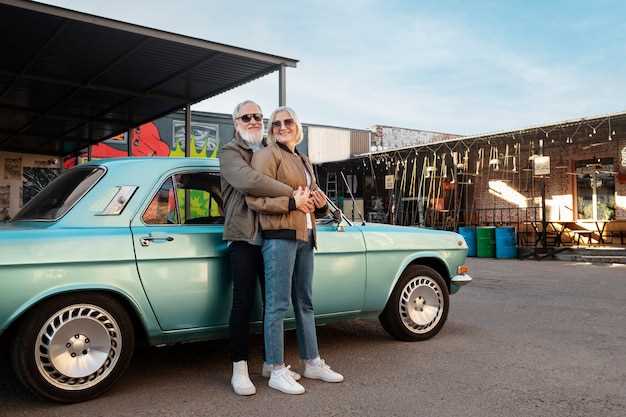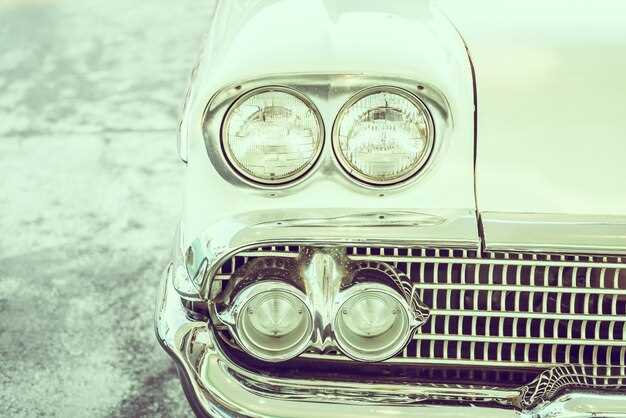
When it comes to vintage cars, determining their value requires a thorough understanding of various factors that contribute to their status as classic vehicles. Unlike modern cars, the pricing of vintage models involves a unique set of criteria, including rarity, condition, and historical significance. If you’re an owner or a prospective seller, knowing how to effectively price your vintage car is crucial for making informed decisions in today’s market.
The first step in pricing your classic car involves assessing its condition. Vehicles that have been meticulously maintained or restored will typically command higher prices compared to those that show signs of wear and tear. Additionally, the value of a vintage car can be significantly influenced by its provenance, including previous ownership history and any notable events associated with the vehicle. Understanding these elements is essential for setting an accurate price that reflects the car’s true worth.
In this complete guide, we will provide you with the necessary tools and insights to accurately assess and price your vintage car. From market research to understanding valuation methods, you will learn how to position your classic vehicle in the competitive automotive market. Whether you’re looking to buy, sell, or simply evaluate your investment, mastering the art of pricing is key to ensuring that your vintage car receives the value it truly deserves.
Assessing the Authenticity and Condition of Your Classic Car
When pricing your vintage car, understanding its authenticity and overall condition is crucial. Authenticity refers to the adherence of the vehicle to its original specifications, which can significantly influence its market value. Verify the car’s VIN, original parts, and factory documentation to assess its authenticity accurately.
The condition of your classic car encompasses several factors, including mechanical functionality, exterior finish, and interior quality. A thorough inspection should cover the engine, transmission, suspension, and brakes to ensure everything works properly. Keep a record of any restorations or modifications, as these can either increase or decrease the vehicle’s value depending on how they align with collector preferences.
Another important aspect of assessing condition is understanding the vehicle’s history. Cars with a clean title and fewer owners typically command higher prices. Additionally, consider the rarity of the model and its desirability among collectors, as these factors can amplify its value in the marketplace.
By accurately evaluating both authenticity and condition, you can set a realistic price for your classic car that reflects its true value, attracting potential buyers while maximizing your return.
Understanding Market Trends and Demand for Vintage Vehicles

When pricing your vintage car, it is essential to grasp the current market trends and demand. The value of vintage vehicles fluctuates based on various economic factors, collector interests, and cultural influences. Understanding these trends can significantly enhance your pricing strategy.
Market Demand: The demand for vintage cars often correlates with nostalgic sentiments and renewed interest in classic automobiles. Collectors and enthusiasts are increasingly motivated by the authenticity, craftsmanship, and history that vintage vehicles represent. Monitoring online forums, auctions, and classic car shows can provide insights into what specific models are currently sought after.
Recent Trends: In recent years, some vintage models have experienced a spike in value due to a surge in demand for electric and eco-friendly vehicles. As technology evolves, certain classic cars that offer unique designs or engineering may see increased interest from a new generation of buyers. Understanding these shifting preferences is crucial for accurate pricing.
Market Research: Regularly conducting market research allows you to stay informed about pricing patterns. Websites dedicated to classic car valuations, like auction sites or collector marketplaces, provide valuable data on recent sales and ongoing trends. This information can help you gauge your car’s potential value in comparison to similar models.
Conclusion: To price your vintage car effectively, you must consider both current market trends and the evolving demand landscape. By staying informed and understanding the factors that influence value, you can set a fair and competitive price that aligns with market expectations.
Utilizing Online Valuation Tools and Expert Appraisals

Determining the right pricing for your vintage car often requires a multifaceted approach. One effective method is utilizing online valuation tools. These platforms provide a quick and convenient way to estimate your car’s value based on various factors such as make, model, year, mileage, and condition. Popular websites often aggregate data from recent sales and market trends, offering valuable insights that can help you set a competitive price.
However, while online tools can provide a general estimate, they may not always capture the unique characteristics of your vehicle. This is where expert appraisals come into play. Professional appraisers have extensive knowledge in vintage cars and understand the nuances that can significantly affect value, such as rarity, historical significance, and modifications. An appraiser can offer a detailed report that not only outlines the market value but also factors in aspects that automated tools might overlook.
When considering pricing, it is essential to combine both online valuation insights and expert appraisals. By cross-referencing these methods, you can achieve a more accurate and fair pricing strategy for your vintage car. This dual approach ensures that you are well-informed and confident in the price you set, whether you are selling, insuring, or simply evaluating your vintage vehicle.

